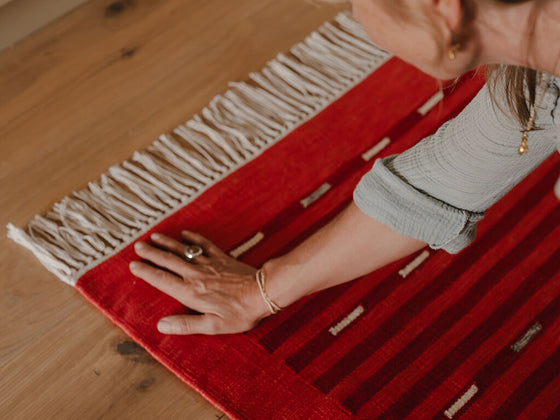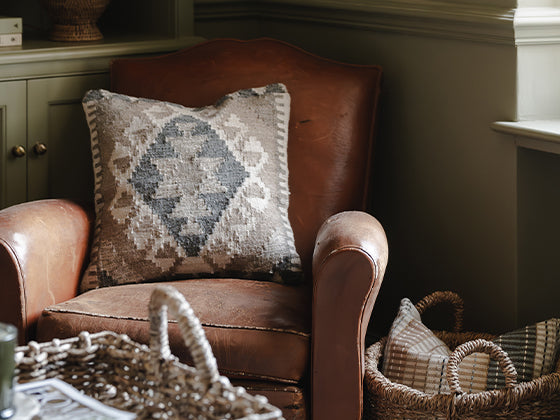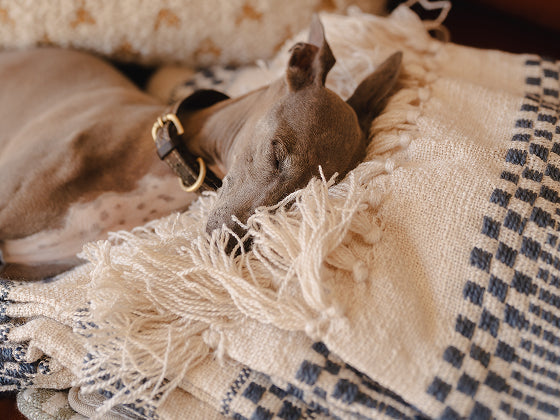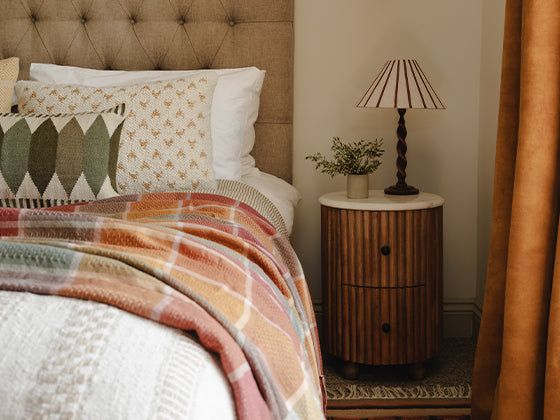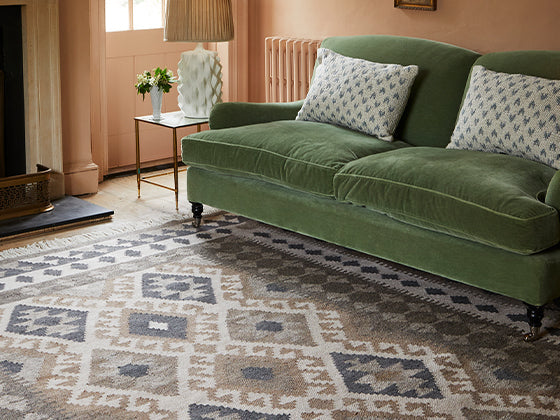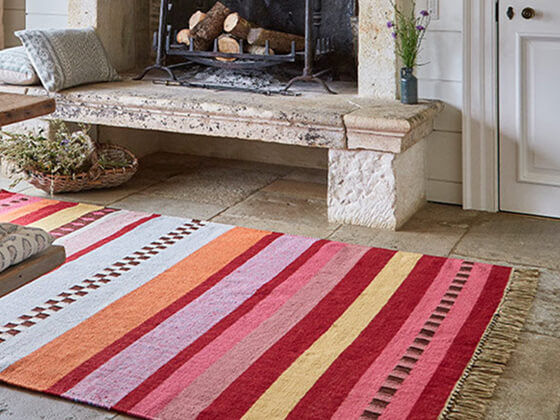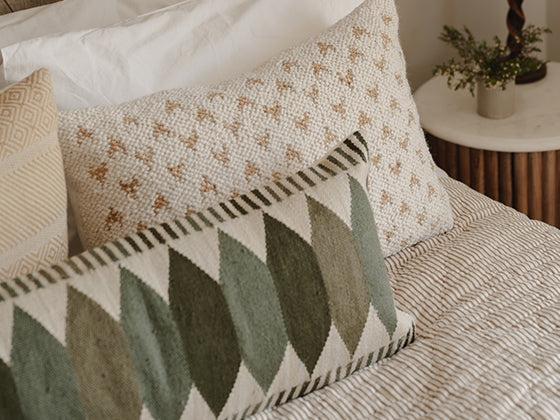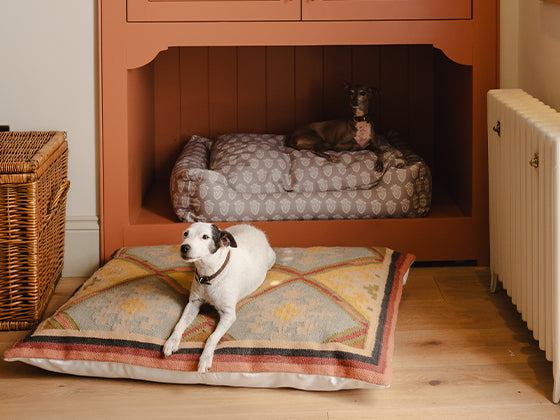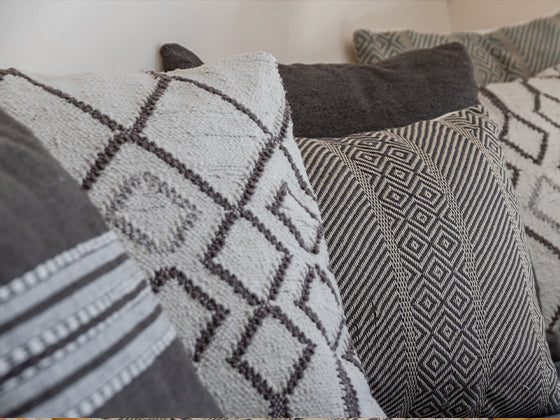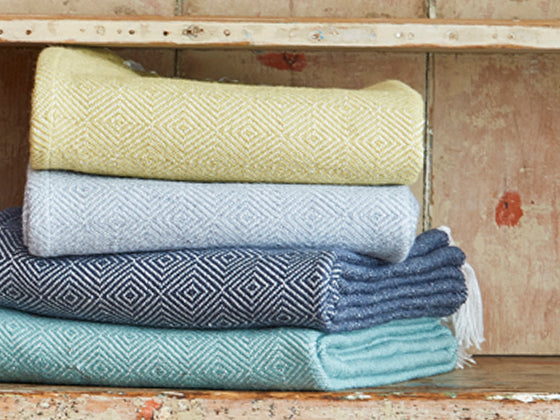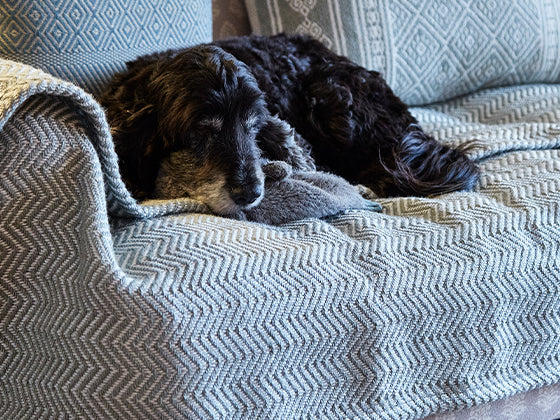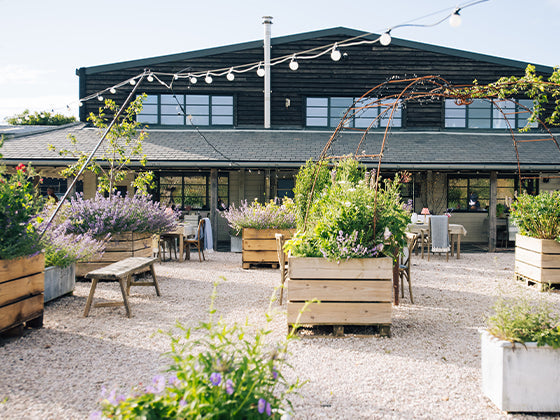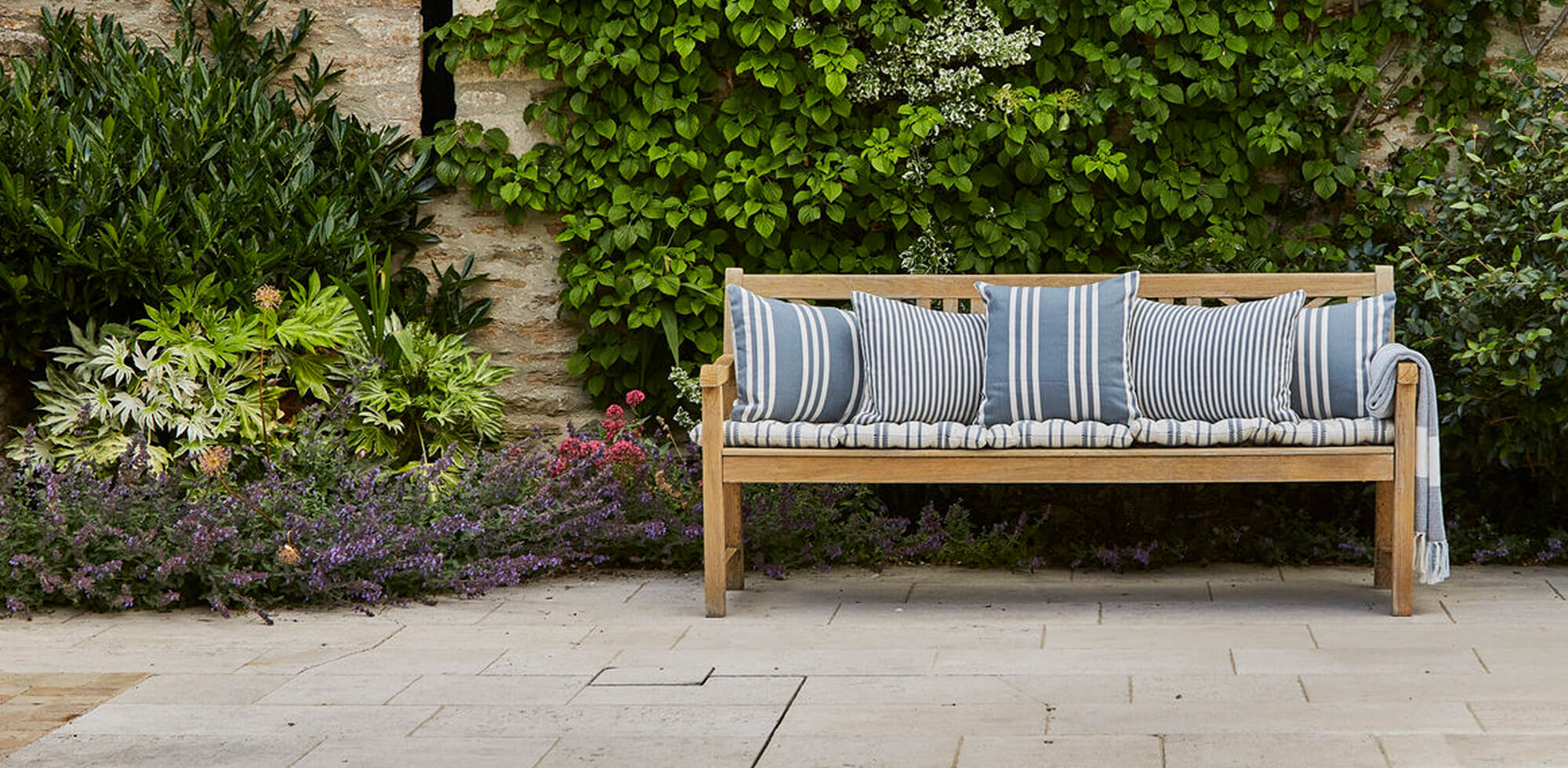Keeping it green
At Weaver Green, it sometimes feels like we spend half our lives trying to convince people online that our gorgeous rugs and textiles really do feel as soft as wool. Meanwhile, the other half is generally spent convincing people at trade shows and in stores that what they are touching really is made from recycled plastic bottles!
We don’t mind of course. It's a testament to our products that people find it so hard to believe our soft and cosy yarn really is made from disused plastic and we just love the look of disbelief on peoples faces when they first feel one of our wonderful blankets, rugs or cushions and discover where it's come from.
To help shed a little light on how we make our amazing yarns and what we’re doing to keep their impact on the planet positive, we've put together some information highlighting the key stages of the process and the positive things we do along the way.
How we turn old plastic into a man-made yarn
First, we take disused PET plastic bottles and shred them to into very fine strips. Then we heat and back comb the strips until tiny fibres start to open.
First, we take disused PET plastic bottles and shred them to into very fine strips
Then we heat and back comb the strips until tiny fibres start to open
Next, we spin and stretch the fibres to create a beautiful, soft and resilient yarn
Next, we spin and stretch the fibres to create a beautiful, soft and resilient yarn. Using non-toxic dyes, we transform our new yarn into a rainbow of different colours.
Once dry and ready to use, we hand loom the recycled yarn using traditional weaving techniques to create gorgeous rugs and textiles that will brighten any home, business or garden.
Using non-toxic dyes, we transform our new yarn into a rainbow of different colours
Once dry and ready to use, we hand loom the recycled yarn using traditional weaving techniques
And create gorgeous rugs and textiles that will brighten any home, business or garden
1 - It starts with the bottles
While we’d all rather it wasn’t the case, the principal component of our products is already widely available and a well reported environmental disaster. Every day millions of plastic bottles are sold and discarded around the world, often failing to be recycled and instead sent to landfill or left to make their way towards rivers and waterways destined for the sea.
By the end of 2019 we recycled our 100 millionth plastic bottle. Almost half of them have been retrieved from streams, rivers and the coast while the rest were chucked away after the briefest of purposeful life, especially given the 450 years an average plastic bottle will take to break down.
We hope as much as anyone that companies will stop producing plastic bottles. There are already more than enough out there to keep us making rugs and soft furnishings for years to come and we’re happy to give plastic bottles, that are typically only used for a few minutes, the chance to be part of something beautiful that will last for decades.
2 - Managing the process
Making textiles from synthetics isn’t a new concept, but it’s estimated that making soft open yarn like ours from recycled plastic bottles uses as much as 70% less energy and almost 90% less water than creating them from scratch. It also makes much more valuable use of the precious resources that go into making the plastic bottles in the first place, like oil and water.
Because the hard work of making the plastic is done already, our production processes can be fine tuned to limit emissions and use as few resources as possible. For example, our yarn is produced using a closed water system that constantly recycles, purifies and reuses the same water.
We heat our dying vats by burning discarded rice and wheat husks, a by-product of local cereal farmers, in factories with low emission chimneys. All of this helps minimise the pollution from our production and reduces our reliance on fossil fuels.
3 - Creating positive textiles
We’re bothered about the environmental impact of our products. That’s why we use long strand yarn to improve tensile strength and reduce the risk of microfibre shedding.
Although our textiles are machine washable, realistically they should only need that kind of deep clean on rare occasions. When they are washed, we always recommend short, cold cycles with full loads and no spin dry; doing so will help minimise the shedding of microfibres.
It's our goal to minimise waste plastic in our packaging, opting whenever possible to use sustainable, recycled and recyclable paper and card alternatives.
A million plastic bottles are discarded every minute. By maximising the quality and lifespan of our products, we're taking some of that throw-away plastic and giving it a chance to have a more purposeful and useful life.
Find out more about about microfibres and how to minimise shedding on our Tackling Microfibres page.

